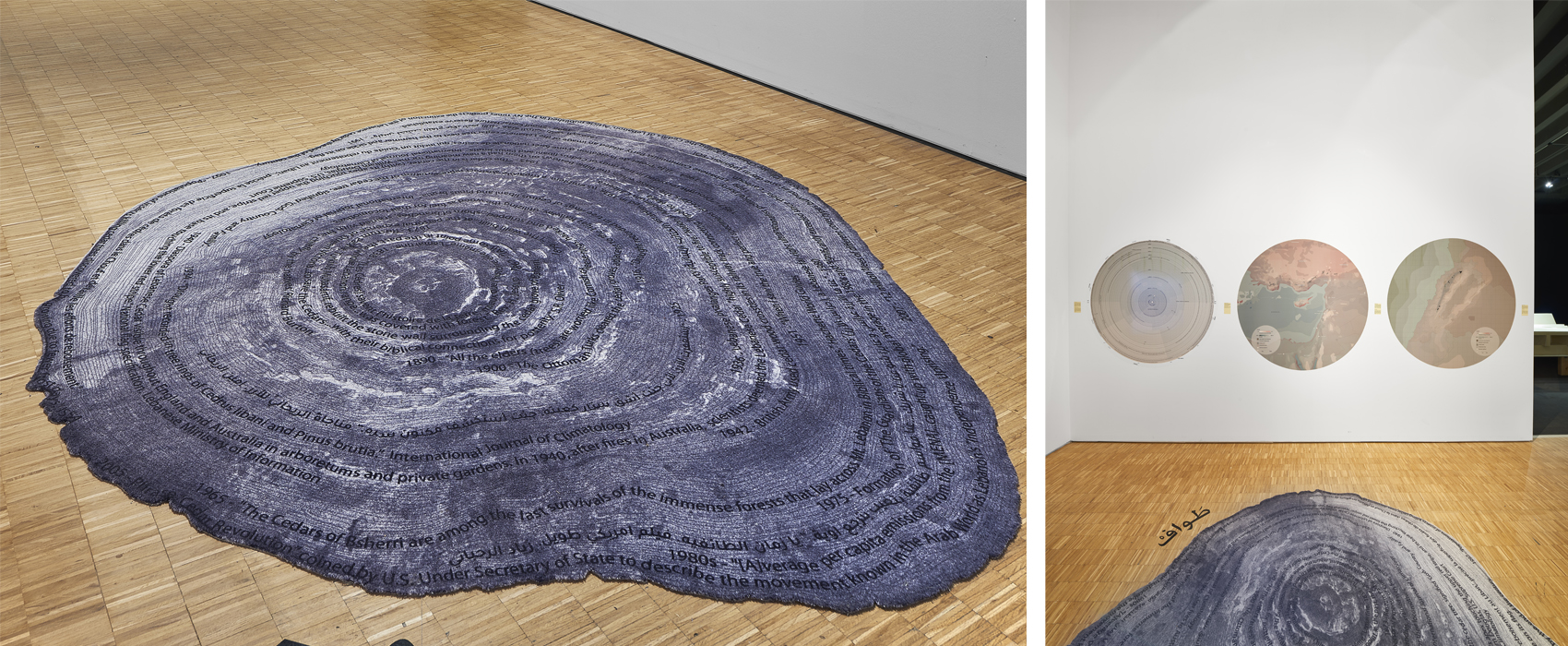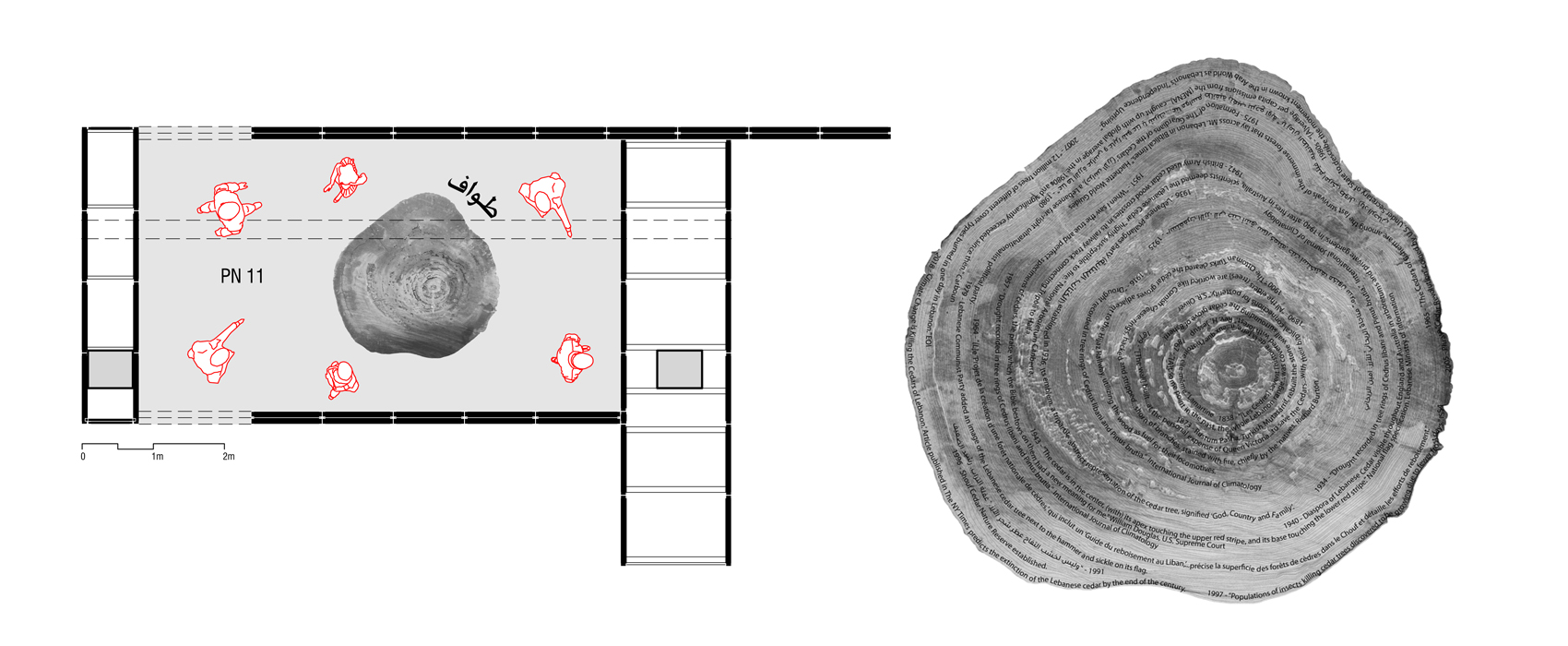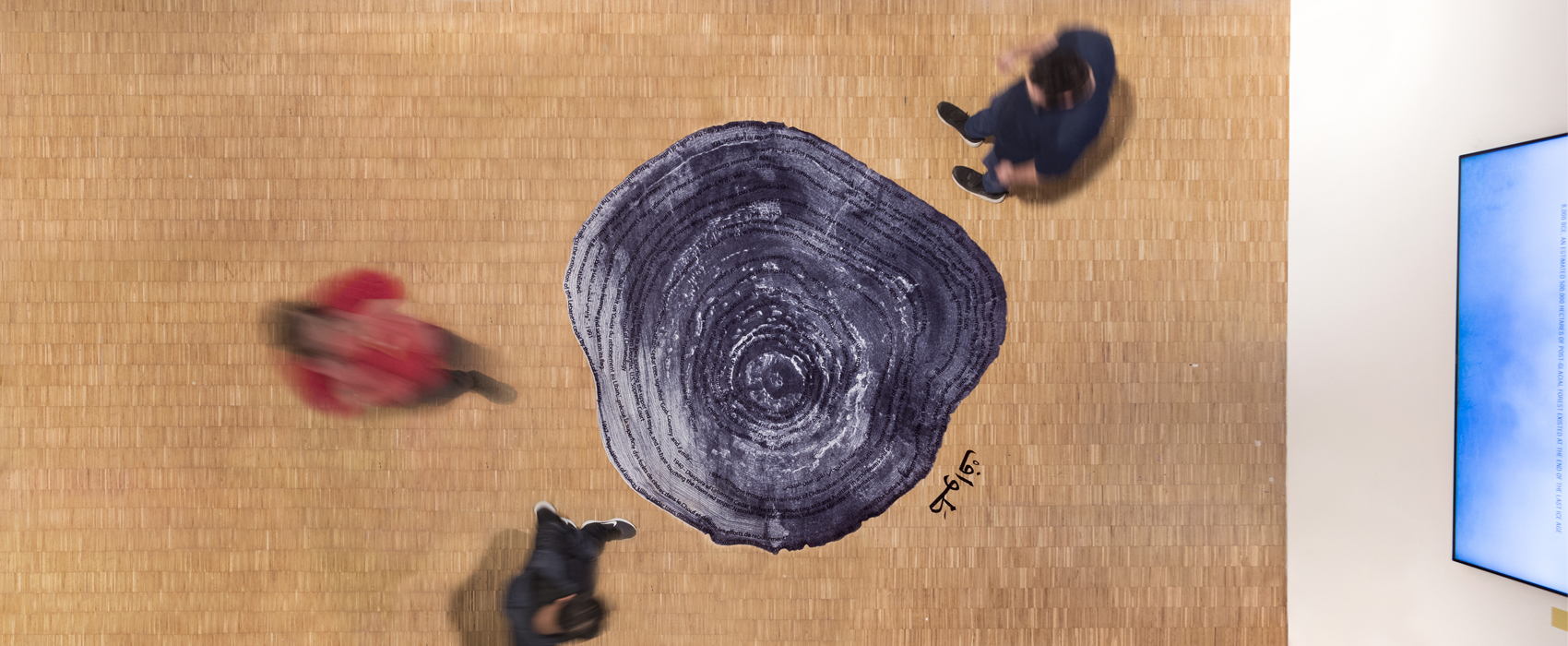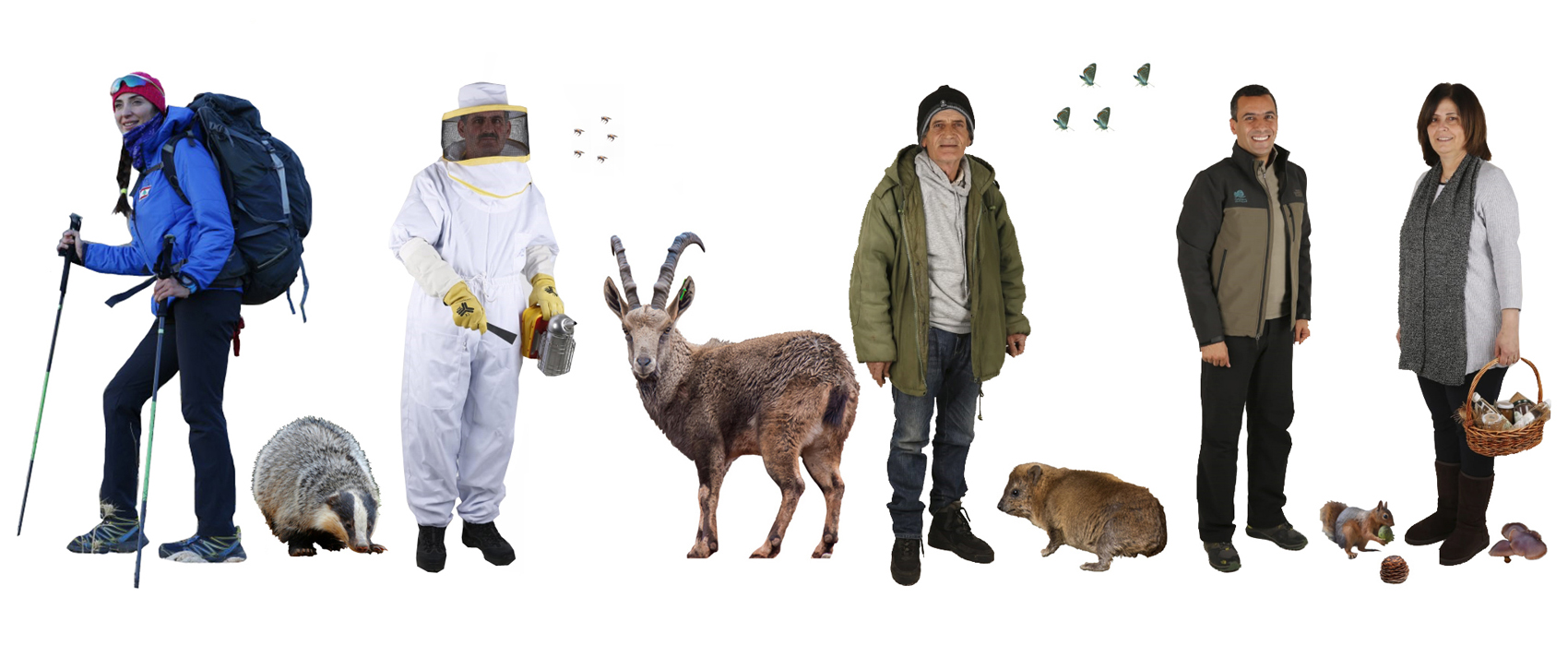
COMMISSIONER
Ministry of Culture, Lebanon
TEAM
Curator: co-curators Shouf Biosphere Reserve, Georges Arbid and L.E.FT
L.E.FT Architects: Makram el Kadi and Ziad Jamaleddine, Rami el Murr, Ibrahim Kombarji
Research Assistant: Mayrah Udvardi
Copy Editor: Maia Simon
Shouf Reserve Team: Nizar Hani, Lina Sarkis, Mirko Panichi, Sarah Nasrallah
Video: Josh Haner /The New York Times
Video Editing: Panos Aprahamian
Photography: Bahaa Ghoussainy / PierCarlo Quecchia
Lebanese Pavilion
XXII Triennale International Exhibition
‘Broken Nature: Design Takes on Human Survival’
Milan 2019
TAWAF
A Genealogy of a Tree.
Tawaf (Arabic: طواف, Ṭawāf), in the Islamic faith, is the devotional act of circling counterclockwise around the Kaaba during the Hajj season. The act of rotating around a sacred object can also be found in Christianity (زياح), Judaism, Hindu and Buddhist devotional practices.
L.E.FT’s installation for the XXII Triennale di Milano ‘Broken Nature: Design Takes on Human Survival’, spatializes the cross section of a Cedar tree trunk from the Shouf Biosphere, the largest Cedar reserve in Lebanon, into a circular floor-map carpet. The interpretive tree ‘map’, through its growth rings, unpacks the biblical, literary, popular, and political imaginaries of the Lebanese Cedar tree across its geological timeline into a new cultural dendrochronology.
‘Tawaf’ re-centers the meaning of the Cedar tree away from its flattened, stencil cut representation, as the national emblem of Lebanon—centered on the country’s flag, into the swirling space of its ecological history. What emerges is not an ‘immortal’ symbol of the nation, but rather a complicated narrative situated at the intersection of geological history, the colonial environmental imaginary, and climate change.
‘Tawaf’ aims to unravel the most prevalent narrative of the Cedar Forest’s process of desertification, the belief that the Mount Lebanon Cedar Forest was historically a lush landscape, spoiled and degraded only in recent centuries by local inhabitants, namely the Ottomans and nomadic Arab communities. Built on a mythological biblical past, this 19th century colonial environmental history paved the way for the larger imperial project of territorial and economic control, disguised as the restoration of the ‘ancient fertility’ of the land of the Middle East. While previous civilizations (since the Phoenicians) have exploited the timber material of the forests, the narrow historical view shaped by colonial narratives washed away the longer geologic timeline (stretching back 12,000 years) of the Cedar Forests. Today we know that the genesis of its shrinking ecology can be relocated to the last ice age. Also eclipsed, with the persistence of this colonial narrative today, is the fact that the current global environmental crisis—disproportionately affecting the Global South—is itself a product of Western industrialization, imported wholesale through the modernization project of the 20th century post-independence nation-state.
‘Tawaf’ prompts the gallery visitor to circumambulate around its rings, reading this expansive history between the lines. Across the walls of the exhibit, circling the floor map, are photographs of the Cedar Forest’s biodiversity, its seasonal cycles of rejuvenations and its biospheric scale stretching beyond national boundaries.
Through circling the installation, the visitor will begin to recognize the necessity of untangling the traces of the complex colonial and nationalist narratives underlying the ills inflicted on the Middle East region—before all else on its environment. Only then can one bolster the ecology of the Cedar tree and reinvent its meaning.
Support:
Ministry of Culture- Lebanon
Italian Embassy in Lebanon
Travel Partner: MEA (Middle East Airlines)


